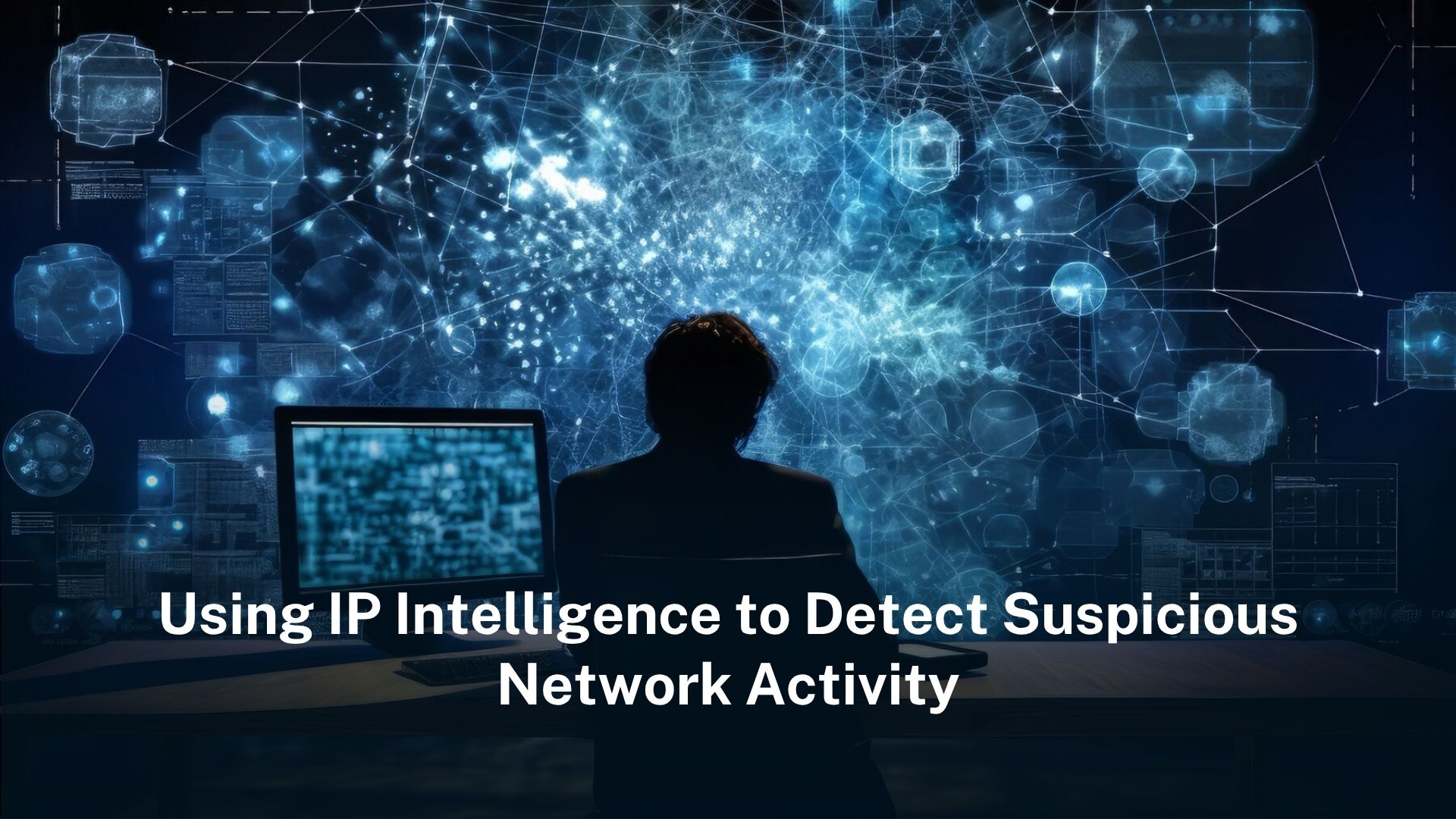IP intelligence spots suspicious network activity by checking IP addresses against threat databases and behavior patterns.
Table of Contents
ToggleAdvanced tools and real-time monitoring make IP intelligence more effective in stopping cyber threats.
Introduction to IP intelligence
Cyber threats grow fast, and businesses need to move quickly to keep their networks and important data safe. One important way in today’s cybersecurity is using IP intelligence to spot strange network activity. IP intelligence looks at data from IP addresses, such as where they are, how they behave, and if they have a good or bad record, to find possible threats before they do damage. Businesses analyze network traffic and compare it with threat data to spot problems, block bad actors, and keep digital assets safe.
This article explains how IP intelligence works, its role in cybersecurity, and the tools and methods businesses can use to reduce risks. With insights from industry experts and trusted sources, we explore practical uses, challenges, and the future of IP intelligence in fighting cyber threats.
What is IP intelligence?
IP intelligence means getting, studying, and using data about IP addresses to spot strange or dangerous activity on a network. every device identifies and communicates with each other through its IP address. However, some IP addresses are marked as suspicious, which is usually because they have done “bad things” – such as sending spam, spreading viruses or conducting phishing.
A professional IP intelligent platform is like a cyber detective, investigating the background of an IP from multiple perspectives: Has it ever been on the blacklist? Which region are you from? What device is connected? Are there any suspicious actions? For instance, frequently logging in at midnight or frantically trying to connect within a short period of time. These clues all come from authoritative threat intelligence databases, blacklists of major security vendors, and shared information from global cybersecurity experts, which can help us accurately determine whether this IP is reliable or not.
John Hultquist, chief analyst at Google’s Threat Intelligence Group, says, “This actor often targets one industry at a time, so the insurance sector should watch out, especially for social engineering attacks on help desks and call centers.” This shows why IP intelligence is important for finding targeted attacks.
The role of IP intelligence in cybersecurity
Microsoft Defender for Cloud Apps uses IP intelligence to find dangerous IP addresses taking part in harmful actions, like password spray attacks or botnet use. Their detection policies use machine learning to lower false alarms, ensuring accurate threat spotting.
A report from Picus Security says, “IP intelligence helps businesses focus their defenses where needed, guiding actions to stop cyber threats.” Businesses combine IP intelligence with other security tools to build a strong defense against complex attacks.
How IP intelligence detects suspicious network activity
Pattern analysis and anomaly detection
One main way of using IP intelligence to detect suspicious network activity is through pattern analysis and anomaly detection. Businesses set a baseline of normal network behavior, and IP intelligence tools find differences that may show a threat. For example, CISA suggests analyzing data to find repeating patterns from automated systems, like malware or scripts, and filtering out normal activity to focus on suspicious behavior.
Anomaly detection looks at unique values in data, like login times or IP addresses not usually linked to a user. A login from an unknown IP address in another country could mean a hacked account. Microsoft’s Entra ID Protection uses real-time and offline checks to spot these issues, flagging actions like impossible travel or sign-ins from risky IPs.
Reputation-based detection
Reputation-based detection is another key part. IP intelligence platforms like Abusix Guardian Intel keep lists of IP addresses known for harmful actions, like spam or phishing. When network traffic comes from or goes to these IPs, the system marks it as suspicious. A report from Abusix says, “Services like Abusix Guardian give real-time data on suspicious IP addresses, helping businesses stay informed.”
This method works well for blocking traffic from known bad IPs, like those used in distributed denial-of-service attacks. IBM says intrusion prevention systems use reputation-based detection to flag and block traffic from IPs tied to harmful activity, improving network security.
Behavioral analysis
Behavioral analysis goes beyond static IP reputation by looking at how an IP address acts on a network. For example, too many connection attempts or odd data transfer patterns can point to an attack. CrowdStrike stresses the value of indicators of attack, which focus on spotting an attacker’s intent, like repeated failed logins or scouting actions.
Kurt Baker, senior director of product marketing at CrowdStrike, says, “By tracking and collecting indicators of attack and using them in a Stateful Execution Inspection Engine, your team can see activity in real time and respond now.” This real-time method is key to stopping threats before they grow.
Tools and technologies for IP intelligence
Intrusion detection and prevention systems
Intrusion detection systems and intrusion prevention systems are important tools for using IP intelligence. An IDS watches network traffic for signs of harmful activity, and an IPS can block it. Cimcor explains, “An IPS is like an IDS, but it can also act to stop an attack by blocking the suspicious activity.”
These systems use IP intelligence to flag traffic from suspicious IPs and take actions, like ending user sessions or blocking specific IPs. IBM says IPS alerts often go to security information and event management systems, giving a central view of threats.
Security information and event management
SIEM solutions, like Splunk, combine IP intelligence with other security data for complete threat monitoring. By linking IP-based alerts with other signs of compromise, SIEM systems help analysts find patterns and prioritize responses. Splunk says, “A database of known signs of compromise can be added to your monitoring tools and SIEM solution,” showing the value of combining IP intelligence with broader threat data.
Threat intelligence feeds
Threat intelligence feeds are a vital source of IP intelligence, giving current data on harmful IPs and domains. Picus Security lists open-source feeds from collaborative platforms that share threat data globally. These feeds help businesses stay updated on new threats and adjust their security rules.
Challenges in using IP intelligence
IP intelligence is strong, but it has challenges. False alarms, where safe activity is marked as suspicious, can overwhelm security teams. Microsoft’s detection algorithms try to reduce false alarms by ignoring common user behaviors, like connections through VPNs.
Another challenge is the huge amount of data. Picus Security says, “A big challenge is sorting through and understanding the massive amounts of threat data coming in daily from many sources.” Businesses should focus on the right data sources to avoid getting flooded with too much information.
Attackers also use simple methods like IP spoofing or anonymous proxies to hide and avoid being noticed. Microsoft Defender for Cloud Apps warns that actions from anonymous proxy IPs can point to harmful intent, and these cases need to be looked at closely to tell safe activity from suspicious ones.
Best practices for implementing IP intelligence
Continuous monitoring and threat hunting
Constant network monitoring is key for effective IP intelligence. BlackBerry suggests building active threat hunting to find advanced persistent threats. Their 2025 Global Threat Report highlights monitoring for regional attack patterns, like PowerShell-based attacks, which were top threats globally.
Regular security training
Employee training is important to support IP intelligence. BlackBerry suggests “Spot the Red Flag” training programs to teach employees to recognize phishing emails and other social engineering tricks. This human defense layer makes technical solutions more effective.
To get the most out of IP intelligence, businesses should connect it with the security tools they already use, like firewalls, SIEM systems, and tools that protect devices.Picus Security advises choosing tools that work well with current systems to guide decisions and update security rules.
Real-world applications of IP intelligence
Securing critical infrastructure
Important sectors like energy and healthcare use IP intelligence to protect themselves from targeted attacks. Elias Bou-Harb, Director of the Cyber Center for Security and Analytics at UTSAenthusiast.com) uses IP intelligence to find and block threats to their networks.
Turning the tide on ransomware
Microsoft Defender for Cloud Apps uses IP intelligence to spot high rates of file uploads or deletions, which may point to ransomware. Their algorithms combine IP data with behavior patterns for full protection.
Stopping social engineering attacks
IP intelligence also helps against social engineering schemes, like phishing. Google’s Threat Intelligence Group reported that the Scattered Spider group targets industries like insurance with social engineering attacks, using compromised IPs to gain access. IP intelligence helps find and block these IPs before they cause harm.
The future of IP intelligence
Informa TechTarget predicts a “data-driven healthcare revolution,” where AI-driven IP intelligence could spot hidden risks and predict threats years ahead.
Businesses will also join IP intelligence with technologies like zero-trust architecture and blockchain to build stronger security systems. They will use real-time threat feeds and work together on shared platforms to stay ahead of attackers.
FAQs
1. What is IP intelligence in cybersecurity?
IP intelligence means collecting and checking data from IP addresses. This helps find spam, phishing, or other harmful activity in the network.
2. How does IP intelligence detect suspicious network activity?
It uses traffic patterns, behaviour changes, and known reputation scores to find IPs that show signs of risk or attack.
3.Why is real-time monitoring important for IP intelligence?
Real-time monitoring helps businesses find and deal with suspicious network activity fast. It helps lower the risk from threats like malware or phishing. It makes sure IP intelligence tools can spot harmful IPs right away. This makes it easier to block or check them quickly.
4. What are the challenges of using IP intelligence?
Some problems include false alerts, large amounts of data, and attacks that come from fake or hidden IP addresses.
5. How can businesses improve their use of IP intelligence?
They can connect IP data to other tools, check systems often, and help staff learn how to follow good safety habits.





We’re a group of volunteers and opening a new scheme in our community. Your website offered us with helpful info to paintings on. You’ve performed an impressive process and our entire group might be thankful to you.